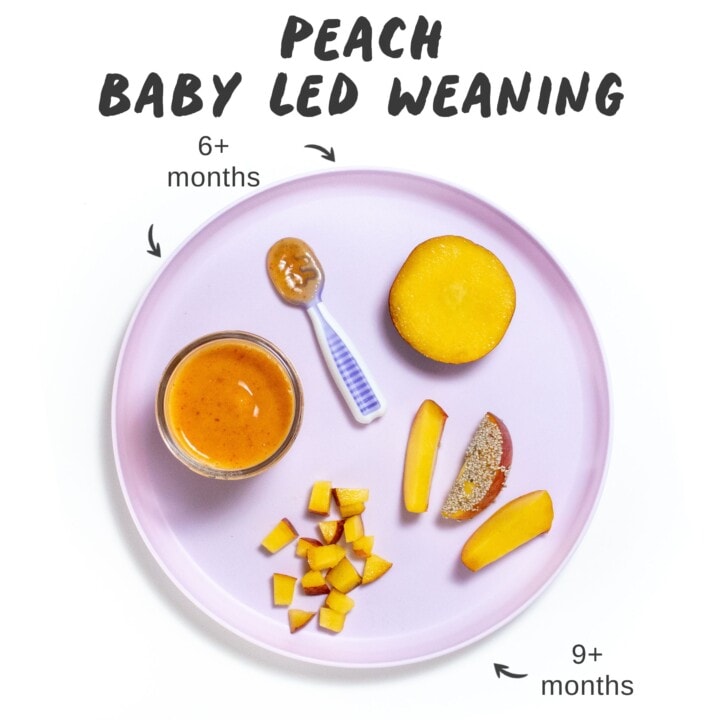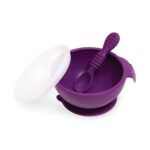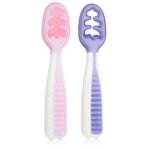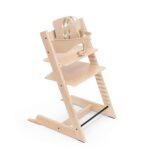Peaches for Baby-Led Weaning
Peaches for baby? Yes, please! Introducing a wide range of flavors and textures is such a big part of your baby’s first year, and peaches are a sweet and juicy favorite worth adding to the mix. Whether you’re just starting solids or well into the finger foods stage, peaches are a delicious and baby-friendly choice. With their soft texture and naturally sweet taste, they’re easy for little hands to hold—and even easier to love!
Medically reviewed and cowritten by Jamie Johnson, Registered Dietitian Nutritionist (RDN), and Lauren Braaten, Pediatric Occupational Therapist (OT).
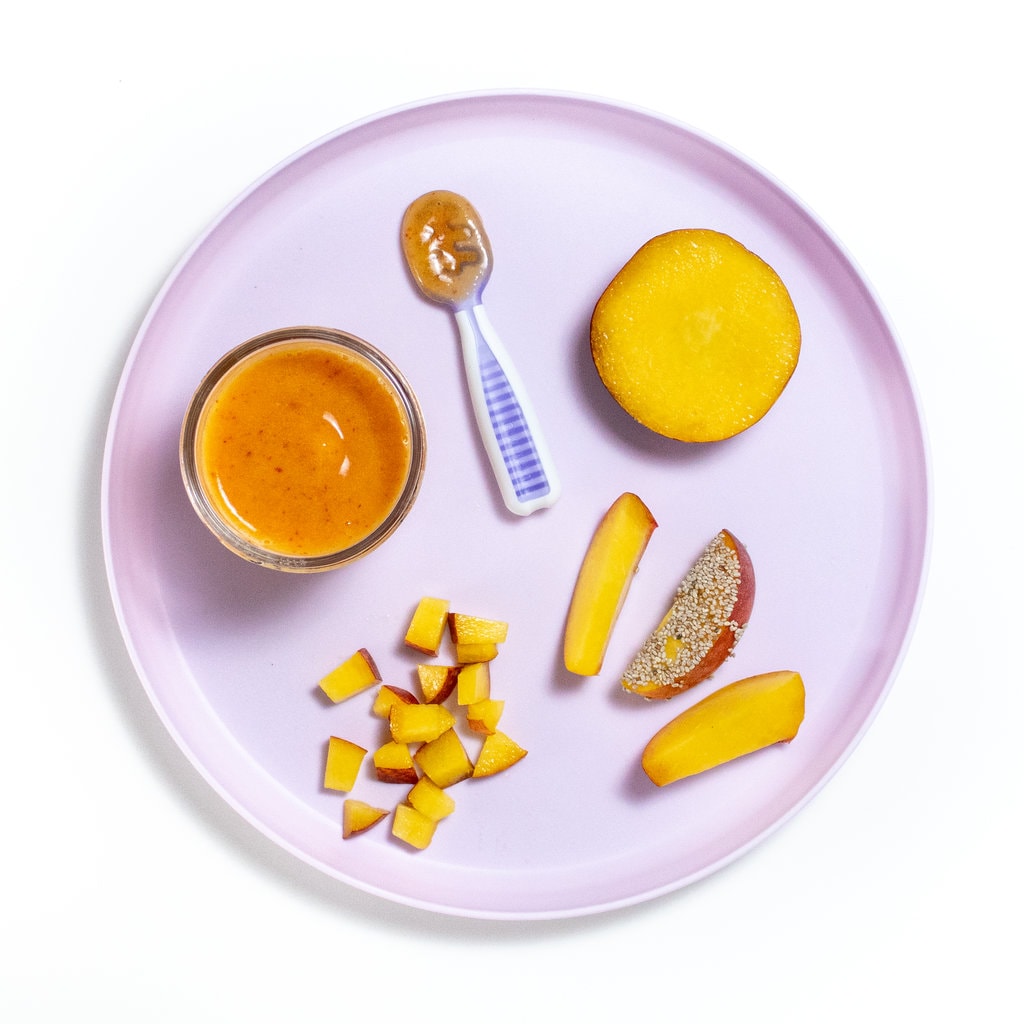
Peaches for BLW Video
Wondering how to serve peaches to your baby?
I’ve got you!
Peaches are one of those go-to fruits that are oozing summer vibes in every bite—sweet, soft, and full of juicy flavor. And the best part? Babies usually love them! Both of my babies devoured peaches like it was their main job in life to see how many peaches they could eat a day.
You can mash or puree them, mix them into yogurt, or serve them in slices that are easy to hold. Just like mango or kiwi, the trick is in how you prep them—especially when it comes to slippery textures or pieces that might be too small. Don’t worry—we’ll break it all down so you can serve peaches in the safest, simplest way for your baby’s age and stage.
First time making homemade baby food? Then, I would suggest that you start by reading my very in-depth Complete Guide to Baby-Led Weaning. You can also check out my best-selling cookbook for even more information and recipes!
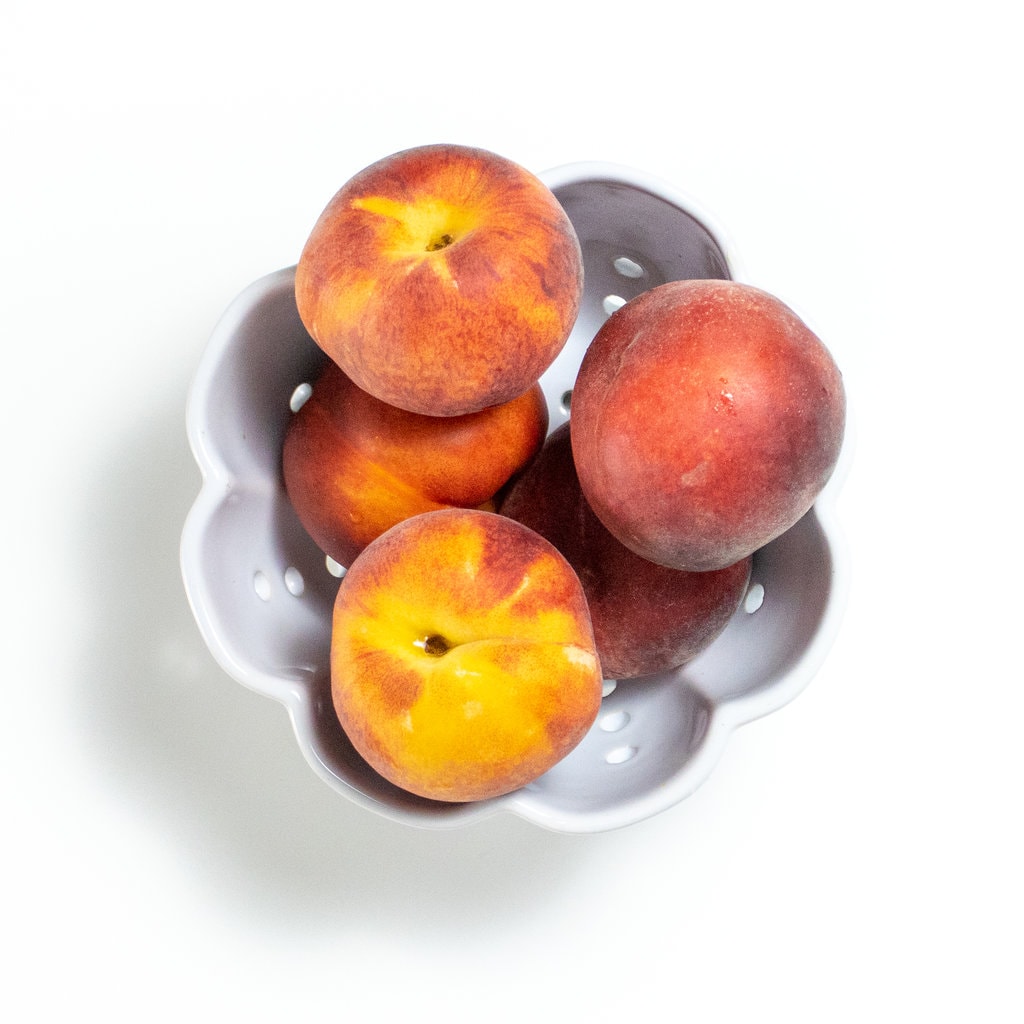
Spices to Add
Peaches are delicious served as-is, or you can add different spices to help expand your baby’s palate. Some of the best spices that go well with peaches include cinnamon, cardamon, clove, ginger, nutmeg and thyme.
Peach Puree: You can offer purees and still allow your baby to lead the way with self-feeding by offering the puree on a self-feeding spoon, by placing a few spoonfuls of the puree directly on the tray or in a bowl for your baby to dip their fingers into, or you can even use the puree as a dip for solid foods such a banana or piece of toast.
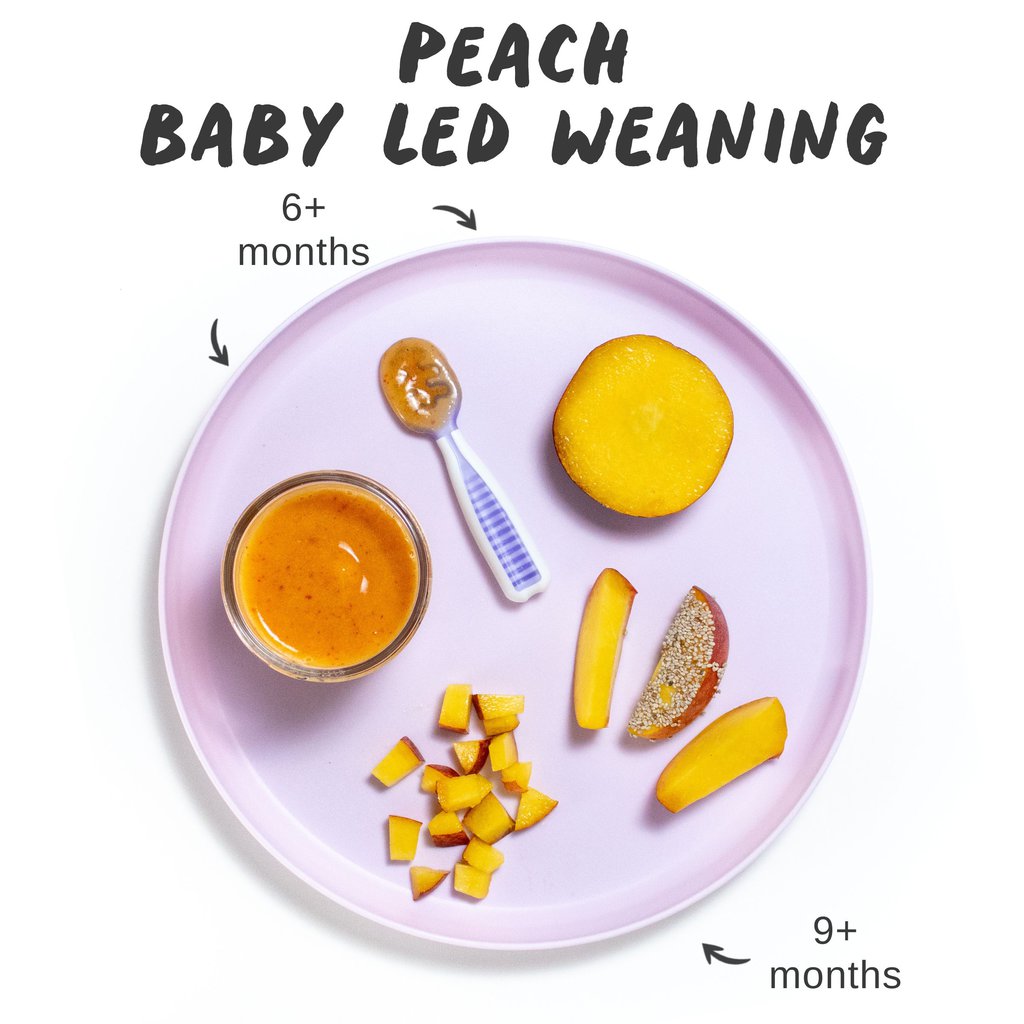
How to Serve Peaches for Baby-Led Weaning
Peaches are typically slippery and firm, which can increase the risk of choking on this fruit. To decrease this risk, only serve very ripe, soft peaches.
Whole, thick slices, halved with pit removed or as a puree (6-9+ months): Thick slices will be easier for your baby to pick up at this age. If serving a halved peach, make sure it is ripe for the soft texture and take out the pit. You can roll the peach halves or slices in finely ground-up nuts, hemp seeds, chia seeds, or shredded coconut to help your baby grasp it. You can also serve peaches to your baby as a puree on a self-feeding spoon.
Slices or small diced pieces (9+ months): Bite-sized pieces will help baby practice their pincer grasp. If they are too slippery, try leaving the skin on or rolling them in crushed coconut, hemp seeds or chia seeds to make them easier to pick up.
Baby-Led Weaning Feeding Tips
- Frozen peaches are just as nutritious as fresh and are available all year round, so if you can’t find fresh ones, go for frozen. If buying canned, avoid those packed in syrup, which is loaded with sugar.
- It may seem counterintuitive, but offering younger babies a larger piece, such as peach havles or thick slices will actually reduce choking risks, as they are less likely to break off a larger piece that’s difficult to manage. Serving larger pieces is also easier for younger babies (6-9 months) to grasp while eating.
- Peaches can sometimes be slippery, so try rolling in finely ground baby cereal, hemp seeds, ground flaxseeds, or finely shredded coconut to help give your baby a better grasp.
- Pureed and mashed peaches are also great for adding to yogurt, oatmeal, and other pureed fruits and veggies.
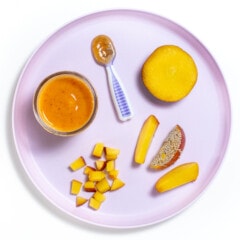
Get the recipe: Peaches for Baby-Led Weaning (6+ months)
Ingredients
- 1 ripe peach
Instructions
- Cut peach into age-appropriate sizes and serve to baby.
Notes
- Place a few spoonfuls of purees directly on the tray or in a bowl for your baby to dip fingers into. Model how to dip your fingers into the puree and bring them to your mouth, to taste some.
- Offer your baby a pre-loaded self-feeding utensil and hold it out for them to grasp or set on their tray.
- Use a solid food as a dipper. You can also offer a soft stick-shaped piece of food, such as a soft roasted carrot or bread lightly toasted and cut into strips to dip into the puree.
Did you make this recipe?
Tag @babyfoode on Instagram and hashtag it #babyfoode!
Frequently Asked Questions
Yes, peaches can definitely be baby’s first food if you choose. Peaches can be given to your baby as soon as they start eating solid foods at around six months.
No, peaches are not a common allergen, however, as with any food, start with a small portion and be aware of any signs that might be an allergic reaction after introducing it.
Peaches aren’t typically a choking hazard, unless they aren’t ripe. Make sure to serve soft and ripe peaches in an age-appropriate form.
Peaches are not known to cause constipation in babies, but are actually one of the “P” fruits (such as pears, prunes, plums) known to help alleviate constipation.

